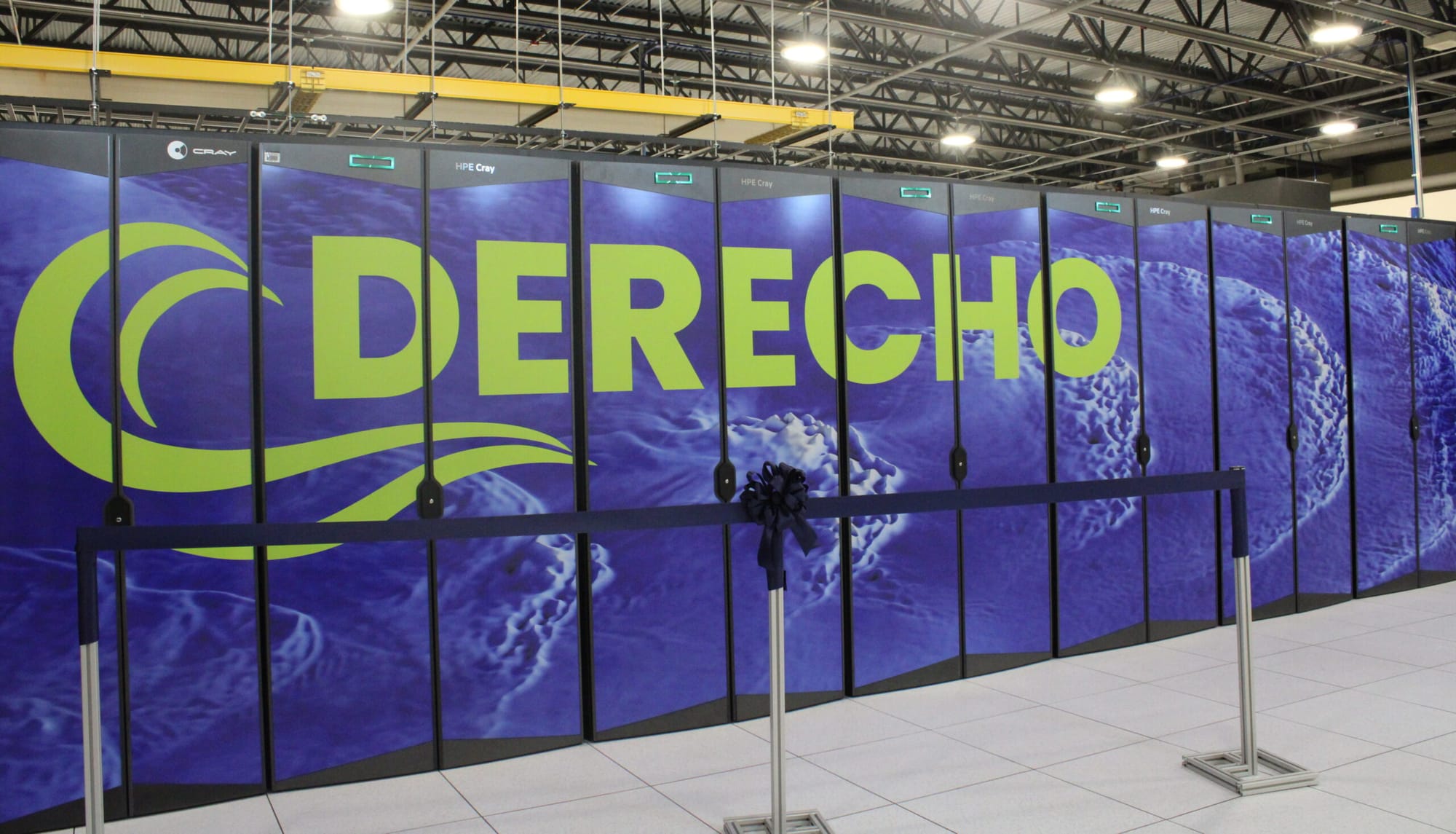Cheyenne Supercomputer Goes Under the Hammer: A New Lease on Life for a Computing Powerhouse
The Cheyenne supercomputer was inaugurated in late 2016 and quickly became a game-changer in scientific computing.

The once-mighty Cheyenne supercomputer, a titan of the computing world, is now up for auction. This move marks the end of an era for one of the world's most powerful and energy-efficient supercomputers, which has been a driving force behind groundbreaking research in geosciences, climate change, and severe weather prediction.
The Rise of Cheyenne
The Cheyenne supercomputer was inaugurated in late 2016 and quickly became a game-changer in the world of scientific computing. Boasting an impressive 145,152 cores across 4,032 dual-socket Xeon E5-2697v4 nodes and 313TB of DDR4-2400 memory, Cheyenne delivered a staggering peak performance of 5.34 petaflops. This computing behemoth was housed at the NCAR-Wyoming Supercomputing Center, where it served as an invaluable tool for researchers studying a wide range of geosciences, including climate change, severe weather, and geomagnetic storms.
Cheyenne's capabilities allowed it to perform more than triple the amount of scientific computing compared to its predecessor, the Yellowstone supercomputer. Moreover, it was three times more energy-efficient, setting a new standard for sustainable high-performance computing. The supercomputer's impact on the scientific community cannot be overstated, as it enabled researchers to tackle complex problems and simulate intricate systems with unprecedented accuracy and speed.

The Changing Landscape of Supercomputing
The decision to auction off the Cheyenne supercomputer is a testament to the rapid pace of technological advancement in the world of supercomputing. As newer, more powerful systems like the Derecho supercomputer, which boasts an astonishing 19.87 petaflops, continue to be developed and deployed, older systems like Cheyenne become less competitive in terms of raw computing power.
However, the auction of Cheyenne's parts presents a unique opportunity for those looking to harness its still-impressive capabilities for less intensive computational tasks. The system's components, including its vast array of processors and memory modules, are expected to attract significant interest from various sectors, such as render farms, gaming enthusiasts, and low-budget hosting services.
A New Lease on Life
The auction details suggest that the Cheyenne supercomputer is being sold off in parts, which opens up a world of possibilities for its future use. Render farms, which require substantial computing power to create high-quality visual effects and animations, could benefit greatly from the acquisition of Cheyenne's components. By repurposing these parts, render farms can significantly boost their processing capabilities without the need for costly new hardware investments.

Gaming enthusiasts are also expected to show keen interest in Cheyenne's parts, particularly its high-performance processors and memory modules. These components could be used to build powerful gaming systems capable of running the most demanding titles at ultra-high settings. The prospect of owning a piece of supercomputing history while enjoying cutting-edge gaming performance is an enticing proposition for many.
Low-budget hosting services may also see the Cheyenne auction as an opportunity to expand their infrastructure at a fraction of the cost of new hardware. By repurposing the supercomputer's components, these services can offer their clients improved performance and reliability, potentially gaining a competitive edge in the market.
The Legacy of Cheyenne
As the Cheyenne supercomputer enters its final chapter, it is essential to reflect on its legacy and the impact it has had on the scientific community. Throughout its years of service, Cheyenne has been at the forefront of groundbreaking research, enabling scientists to push the boundaries of human knowledge and understanding.
The supercomputer's contributions to the study of climate change, severe weather, and geomagnetic storms cannot be understated. By providing researchers with the tools to simulate and analyze complex systems, Cheyenne has played a crucial role in advancing our understanding of the world around us and the challenges we face.
Moreover, Cheyenne's energy efficiency set a new standard for sustainable high-performance computing, demonstrating that cutting-edge research need not come at the cost of environmental responsibility. This legacy will undoubtedly continue to inspire future generations of supercomputers and the researchers who rely on them.

A Final Word
The auction of the Cheyenne supercomputer marks the end of an era, but it also presents a unique opportunity for its components to find new life in various applications. As the world of supercomputing continues to evolve at a breakneck pace, it is heartening to know that the legacy of this computing powerhouse will live on, not only through the groundbreaking research it has enabled but also through the continued use of its parts in new and innovative ways.
As we bid farewell to Cheyenne, we can look forward to a future where its components will continue to push the boundaries of what is possible, whether in the realm of scientific research, creative industries, or personal computing. The Cheyenne supercomputer may be retiring, but its impact will be felt for years to come.




